#klon style pedals
Explore tagged Tumblr posts
Text
5 Best Dumble Style Pedals For 2023 (Includes Budget Options)
5 Best Dumble Style Pedals For 2023 (Includes Budget Options)
1. J.Rockett The Dude J.Rockett’s The Dude is designed to capture the tone of the Dumble Overdrive Special amplifier. I’m not sure which Dumble Overdrive Special this pedal is based on. Their writeup mentions both Larry Carlton and Robben Ford. But their ODS amps were both individually voiced. Regardless – this is my personal favorite Dumble style pedal that I have ever played from a pure…

View On WordPress
#best budget exercise bikes#best distortion pedal#best dumble pedal#best pedal switcher#best pedals 2022#bluesbreaker style pedals#boost pedal#boss pedals#compressor pedal#delay pedal#distortion pedal#dumble#dumble ods tones#guitar pedal#guitar pedal demo#guitar pedals#jhs pedals#klon style pedals#marshall-style pedals#optical compressor pedal#overdrive pedals 2023#pedal#pedals#that pedal show#the best pedal for a les paul
0 notes
Text
TONEX ODS Legends Signature Collection plug-ins modeled after legendary amplifiers from the 70s to 2000s
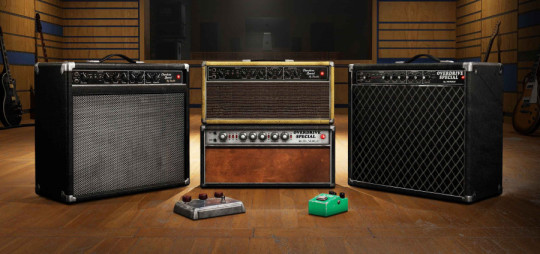
IK Multimedia announced the 'ODS Legends' signature collection, modeling four types of legendary amplifiers using the TONEX engine. The ODS Legends Signature Collection for TONEX gives you instant access to 4 priceless Dumble Overdrive Special amplifiers. Found behind many of the world’s best players including Robben Ford, Stevie Ray Vaughan, Larry Carlton, David Lindley, John Mayer and more, the Overdrive Special is sadly no longer made today, easily fetching 6 figures when a rare example goes to auction. As a bonus, we’ve also included 2 legendary overdrive pedals known to pair perfectly with Dumbles to further push your tone in exciting directions.

IK had the exclusive opportunity to capture each of these incredible amps while they passed through world-famous Ocean Way Studios in Nashville, Tennessee, a studio renowned for its superior recording facilities and long history of hosting legendary musicians. All amp and pedal settings were dialed in by tone experts to a variety of sweet spots from clean to overdrive and meticulously captured in between recording sessions. This Signature Collection of 20 Tone Models recreates the very essence of these vintage treasures and makes them finally accessible to all discerning tone aficionados. Utilizing IK's cutting-edge AI Machine Modeling Technology in conjunction with the Ocean Way's sonically perfect environment has produced incredible results that you can own today. https://www.youtube.com/watch?v=_eIioEGY26E
Collection Overview
- A collection for use across the entire TONEX ecosystem: Mac/PC, iOS, TONEX Pedal - 20 Tone Models based on 4 Dumble amplifiers, a Klon and an early '80s Tube Screamer - Created using cutting-edge AI Machine Modeling™ technology with advanced training - Painstakingly dialed in and captured at the renowned Ocean Way Studios in Nashville - Compatible with all TONEX versions including the free TONEX CS and TONEX App - Easily load and perform live with any Signature Tone Model using TONEX Pedal The all-tube Overdrive Special is Howard Dumble’s most prized model and was produced in very limited numbers, each one hand-wired and custom-built for a particular artist to suit their playing style and tone requirements. Known for its inspiring harmonic richness in the overdrive channel and transparency in the clean channel, the ODS is extremely versatile and can be used for a variety of genres including blues, rock and jazz, rewarding the player with unmatched headroom and responsiveness. The 4 Overdrive Specials in this collection are pristine examples and were purchased from their original owners with their original tubes still mounted. Because the circuitry was tailored to suit a specific player, each amp offers a distinct and exciting tone that was captured with multiple settings, letting you find the Tone Models that sound best for your situation. Or enjoy the Rockstar luxury of mid-stacking several ODS Tone Models together in AmpliTube to create your own signature tones.
What's Included
1979 Overdrive Special 50 Watt

This 1979 Dumble Overdrive Special amp head is a little brighter than the other amps in the collection with a more articulate midrange and tighter low end. It was connected to a 1979 Dumble 2x12 cab with JB85 Celestion speakers during the tone modeling process, producing 4 Tone Models: Clean 1, Clean 2 (FET input), Overdrive 1, Overdrive 2. 1983 Overdrive Special 100 Watt

This 1983 Dumble Overdrive Special amp head is harmonically rich with slightly higher mids than the ′84 ODS below. It was modeled running through a 1983 Dumble 2x12 cab with EV 12L speakers, resulting in 5 Tone Models: Clean 1, Clean 2 (+ preamp boost), Overdrive 1, Overdrive 2, Overdrive 3. 1984 Overdrive Special 50 Watt

This 1984 Dumble Overdrive Special combo amp offers a smooth and velvety overdrive with a touch of low-mid punch. For its capture, it was connected to 2017 Van Weelden 2x12 cab with EV 12L speakers, producing 5 Tone Models: Clean 1, Clean 2 (+ preamp boost), Overdrive 1, Overdrive 2, Overdrive 3. 2004 Overdrive Special 50 Watt

This 2004 Dumble Overdrive Special combo amp is slightly more mid-scooped when compared to the ′83 and ′84 ODS models above with a more defined low end. It was run through a 2017 Van Weelden 2x12 cab with EV 12L speakers during the tone modeling process, resulting in 4 Tone Models: Clean 1, Clean 2 (+ preamp boost), Overdrive 1, Overdrive 2. Two legendary pedals
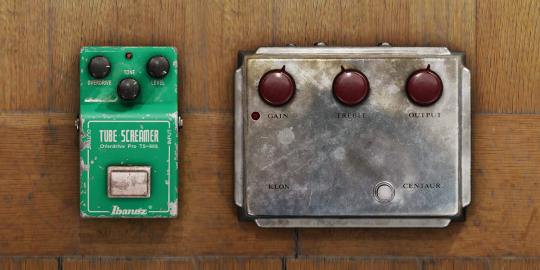
1981 Ibanez TS808 The first Tube Screamer, the TS808, was released in the late ′70s. A brilliant distortion and overdrive box from Ibanez, it has built a reputation that’s led it to pass into musical urban myth. Helped along with Stevie Ray's use, the TS808 is still highly in demand today with vintage units easily trading above $1,000. Silver Klon Centaur overdrive The legendary Silver Klon Centaur overdrive holds a mystique that’s undeniable as evidenced by the steep prices it fetches on used gear websites. With its unique overdriven tones and boosting capabilities, it’s the ideal boost to your front end or a full-on drive inspiring players from Jeff Beck to John Mayer.
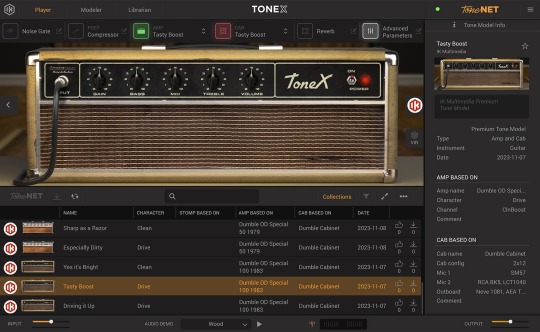
All Tone Models in the ODS Legends Signature Collection were captured by Audio Engineer and Operations Manager, Austin Atwood at Ocean Way Studios, a world-renowned recording studio located in Nashville, Tennessee. Housed in a 100-year-old Gothic revival grey stone church, Ocean Way Nashville provides an exceptional acoustical space and has recorded some of the biggest names in music including Willie Nelson, Sheryl Crow, Steve Martin and Paul Simon. The ODS Legends Signature Collection offers you a once-in-a-lifetime opportunity to experience the exact tones revered by countless guitar legends. Whether you seek the creamy overdrive of a Dumble amplifier, the harmonically rich overdrive of a Klon or that timeless Tube Screamer tone, this collection gives you exclusive access to record and perform with these celebrated tones at any time. Currently, the TONEX ODS Legend Signature Collection is being sold at a launch discount price of €49.99, down from the regular price of €99.99. You can find more information via IK Multimedia website and purchase from there. Read the full article
0 notes
Text
DIY legendary op-amp Big Muff

Welcome to my guitar effects workshop! Today, we will study the circuit and history of the pedal, which is copied and improved by dozens, if not hundreds of companies and masters. And, of course, we will build and listen to our own copy.
Almost every audio signal processing effect in electric guitar music and analog synthesis was born from faulty equipment or setup.

I believe the fuzz effect's history began the same day the history of rock 'n' roll began. In 1951, five years before he met his future wife and vocalist Tina, Ike Turner, founder of The Kings Of Rhythm, recorded a song named after an Oldsmobile 88.

More precisely, in honor of the innovative Rocket 88 engine installed on this luxurious, stylish muscle car.

Before recording, the Fender Bassman amplifier Ike was using was dropped, and a tube exploded.

So, instead of a pure bluesy guitar sound, the buzzing sound of the future came out of the speakers. The ensemble played rhythm and blues, but rock and roll sounded.

In 1961, virtuoso session musician and unusual guitar enthusiast Grady Martin recorded the bass solo for Marty Robbins's song Don't Worry through the channel of a tube mixing console that turned out to be faulty. However, not only did this not spoil the solo, which was left on the record and made it onto vinyl, but it was the beginning of a new guitar sound.

To repeat this sound, Orville "Red" Rhodes, known for his iconic Velvet Hamer pickups, created the first custom effect in a box plugged between the guitar and the amp input. Pedal-style effect boxes were invented later.

In 1962, the great Nokie Edwards, whom the Japanese call the King of Guitars, specifically used the fuzz "box" for the first time, the very one created by Red Rhodes, when recording a guitar riff. It was the single The 2000 Pound Bee by The Ventures.

Be sure to listen to this masterpiece song. The fuzz gives the composition a unique space. Each note of the guitar flashes like a firework spark.

Next up. Who hasn't heard (I Can't Get No) Satisfaction by The Rolling Stones? In this song, Keith Richards used the first commercial Gibson/Norlin Maestro FZ-1 Fuzz-Tone, released already in a pedal body.

And the much more famous smiling, round-faced Dallas-Arbiter Fuzz Face is, of course, associated with Jimi Hendrix, the virtuoso who took the art of electric guitar playing to a whole new level.

And finally, David Gilmour used the Electro Harmonix Big Muff in his masterpiece solo Comfortably Numb. This is the very pedal we are going to study and assemble today.
But first things first.

In 1967, Mike Matthews, a young IBM computer sales manager, electronic engineer, and musician and producer who had worked with Chuck Berry, among others, was impressed by the song Satisfaction, played on the radio even more often than it is now. The demand for fuzz pedals was great, and they were assembled in New York City by a single music equipment repair engineer, William Berko, in his shop, ABCO Sound, on 48th Street, in single copies.

Bill suggested that Mike work together, and every couple of weeks, they handed Alfred Dronge, the founder of Guild Guitar Company, a few hundred assembled pedals that went by the name Foxey Lady.

These were Mosrite Fuzzrite pedals based on the Gibson Fuzz-Tone circuit. It differs from Fuzz Face in that the second knob does not control negative feedback, i.e., gain. Still, it is a crossfader between the signals from the first and second transistors.

In other words, the knob mixes the amplified clean signal of the guitar with the distorted signal after limiting. It allows the musician to find the right balance between them. Another iconic pedal, the Klon Centaur, works similarly.

Note that the first transistor is a buffer in the original Maestro FZ-1 Fuzz-Tone. It is included in the emitter follower circuit and completely repeats the shape and voltage of the input signal. The foot switch short-circuits the output of the distorted signal.
This is simple, effective, and guaranteed to eliminate distortion of the clean signal. Still, the entire voltage gain becomes the task of a single Q2 transistor, which, for this reason, must have a high gain. In the 1960s, such transistors had to be carefully selected from many (as boutique pedal builders still do).
Instead, the Mosrite Fuzzrite uses the first transistor in a common emitter circuit, which gives voltage gain and reduces the second transistor requirements but distorts the buffered signal.

In 1968, Mike Matthews released his first guitar gear, LPB-1 Linear Power Booster, under his brand, Electro-Harmonix. The founder of the company was 26 years old at the time.

The developer of the LPB-1 was the brilliant inventor Robert Myer, who worked at Bell Telephone Laboratories. And the purpose of this silver box was not to overdrive an amplifier. Back then, guitar amps had a big headroom for clean, loud sound, and the concept of overdrive didn't exist yet, although there was fuzz.
The Linear Power Booster allowed you a long, sustained tone by amplifying the weak signal of the then-current pickups. And prolongated sustain was especially demanded from electric guitars.
An acoustic guitar cannot have a long sustain because it gives the energy of string vibrations to the air. That's how it works. But an electric guitar, especially a solid-body guitar like the Fender Stratocaster and even more so a Gibson Les Paul with a glued-in neck, gives only a signal to the amplifier through the pickups. That's why a note can sound much longer, especially if the signal is processed properly.

The second EHX product was the Muff Fuzz. Still not a pedal, in the same box as the LPB-1 Booster Sustainer, same one switch and one knob, only with an output socket instead of an output jack on the body.

Today, this device is available as a pedal, called EHX Muff Overdrive Nano. Then, the circuit is a Fuzz Face without a distortion control potentiometer but with added limiting diodes. So, in sound terms, it's more of an overdrive than a fuzz.

Muff Fuzz version on operational amplifiers is also produced. Here, we can immediately see that this is a pure overdrive, with only the name of the fuzz.

What if the developer combines the Sustaining and Overdrive effects, LPB-1 and Muff Fuzz, into one pedal? That is, create a pedal with three-stage gain and diode limiting on the third stage?

That would be the Big Muff. Like the Muff Fuzz, it exists in transistorized and op-amp versions. I will build the op-amp version from a DIY kit from Landtone.

I really like DIY kits from this company, but today, they missed the hole placement. The jack plane should be almost adjacent to the top wall of the case; otherwise, you can't install the PCB. Here, it is offset in height by more than 3 mm.

The holes are drilled the way they should be on the blue pedal, but on the silver pedal, the holes are offset.

I had to work with a drill and a file.

In the end, the board fit into the case, but it was ugly. I can't gift or sell such a pedal. (You can, of course, fill the extra part of the hole with a "cold welding" type compound, then sand it down, but it's a lot of work with no guarantee that the compound won't fall off).
Therefore, it is more reliable to buy kits where the holes are not drilled and drill them yourself. Out of 7 Landtone kits, I found offset holes only in two, and such a significant offset, which does not allow the installation of the PCB, only in one of these cases.
And now you can hear what the fantastic Big Muff fuzz distortion sounds like, with its really great sustained tone, as well as watch the pedal's assembly process.
youtube
The EHX Big Muff and its many versions, clones, and mods today continue to lead the way among the most beloved and sought-after pedals among guitarists and bassists of all styles, from metal to ambient.

Thanks for your attention! I'm going to build the kit from the last photo. On its PCB, there is space for two dual op-amps, while Big Muff has one dual op-amp and the second one single. That's why the next project promises to be no less, even more interesting.
0 notes
Photo

Posted @withregram • @mojohandfx Thanks to Christopher K in Germany for the post and a few words about his Sacred Cow!..🙏👍 • @christopher_k_guitar My favorite Klon-style pedal - Mojohand FX Sacred Cow Overdrive. Putting this in front of a JTM45 is hard to describe... #guitarist #guitar #guitarra #geartalk #geartopia #guitarrista #fun #mojohandfx #mojohandfxpedals #sacredcowoverdrive #instamusic #marshallamplification #rocknroll #instagood #tone #knowyourtone #guitarpedals #blues #peaveyamps #photooftheday #canonphotography #christopher_k_guitar #howiplayit #dialinginthetone #aaysr #axeandyoushallreceive (at Axe and You Shall Receive Inc.) https://www.instagram.com/p/CO_18DUM4wu/?utm_medium=tumblr
#guitarist#guitar#guitarra#geartalk#geartopia#guitarrista#fun#mojohandfx#mojohandfxpedals#sacredcowoverdrive#instamusic#marshallamplification#rocknroll#instagood#tone#knowyourtone#guitarpedals#blues#peaveyamps#photooftheday#canonphotography#christopher_k_guitar#howiplayit#dialinginthetone#aaysr#axeandyoushallreceive
4 notes
·
View notes
Text
Last week's top 20 videos (2019, week 18)
Top 20 videos last week (April 28 - May 4)
Extraordinary Reverbs (by JHS Pedals)
How To Choose The Right Overdrive Pedal For Your Needs ? That Pedal Show (by That Pedal Show)
Jackson Audio - BROKEN ARROW Dynamic Overdrive - Roundtable Discussion (by Jackson Audio)
HX Stomp Demo with Paul Hindmarsh | NAMM 2019 (by Line 6)
Origin Effects Cali76 Stacked Edition Compressor Pedal || Official Product Video (by Origin Effects)
The Suhr RIOT Distortion pedal with Ben Eller (by Suhr)
Strymon TimeLine - Effects Loop: Envelope Filter - Demo (by Strymon)
MATTHEWS ARCHITECT V3 Klon-style DRIVE with EQ and BOOST (by Pete Thorn)
Death By Audio VS Beetronics | Total Sonic Annihilation 2 at NAMM (by Death By Audio)
Choosing The Right Reverb Pedal: From Spring to Experimental | Reverb Tone Report (by reverbmarket)
Boss DC-2W Dimension C Demo (by GuitaristMag)
Matthews Effects Astronomer v2 & Architect v3 - Demo (by fluff191)
Cali76 Stacked Edition - Origin Effects (by JayLeonardJuatco)
My Top 5 CRAZY & BIZARRE Guitar Pedals (by Magpie Pedals)
TC Electronic 3rd Dimension Bass Demo (by Bassic Gear Review)
Anasounds | Element [Real Spring Reverb] (by Jake Cloudchair)
"What a wonderful world" - Connor Thomas with ToneWoodAmp (by ToneWoodAmp)
Dwarfcraft Eau Claire Thunder: Gold Standard (by Dwarfcraft Devices)
JAM FORMULA B feat. Febbre Da Chitarra (Pink Floyd - Money) (by Diego Leanza)
Insane custom pedals from JamPedals at NAMM19 (by EytschPi42)
Overviews of the previous weeks: http://www.effectsdatabase.com/video/weekly
Discuss this list at the forum: http://forum.effectsdatabase.com/viewtopic.php?f=3&t=854
from Effects Database http://bit.ly/2Jr4MoI
1 note
·
View note
Photo
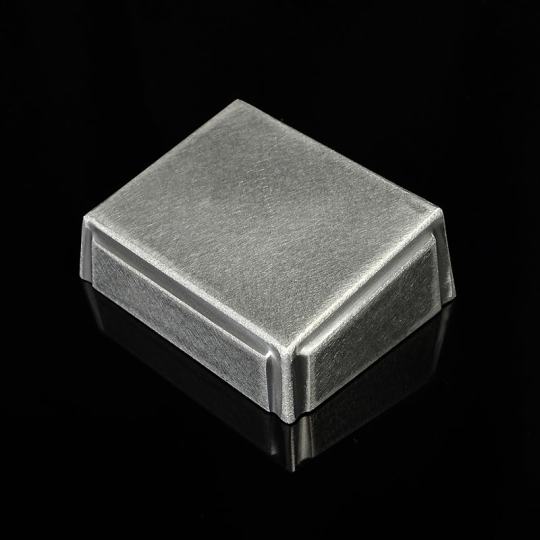
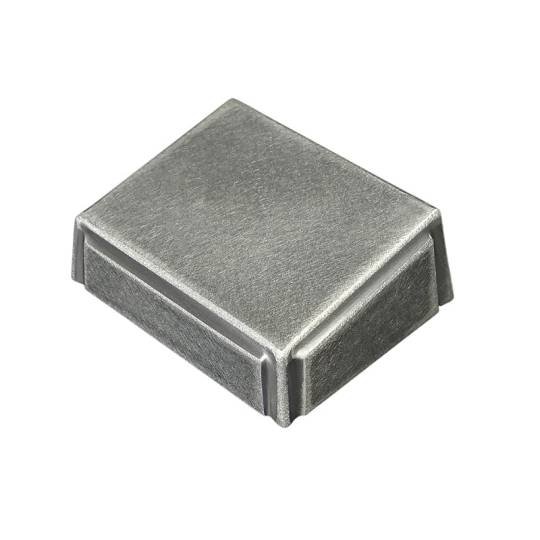
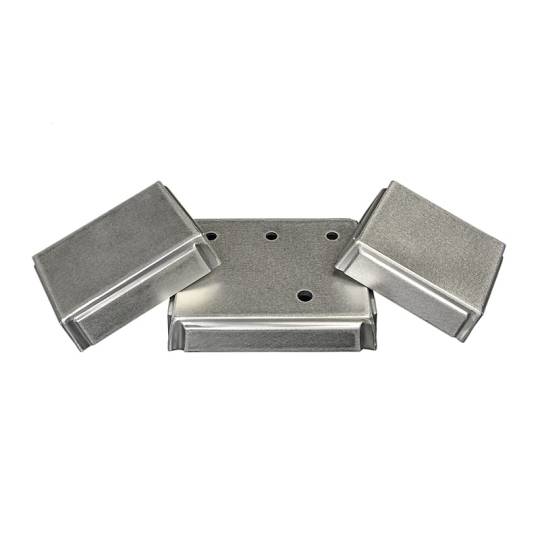

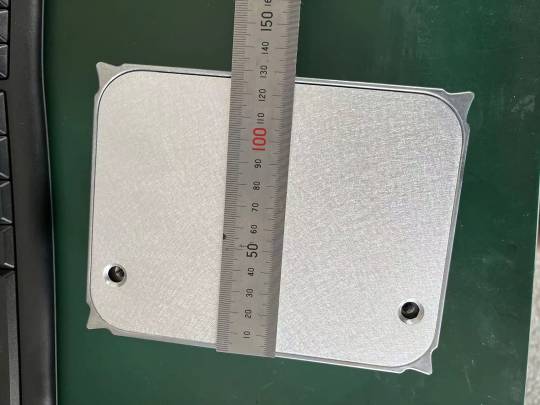
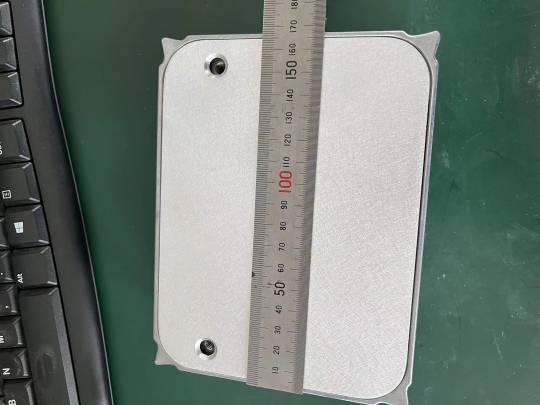
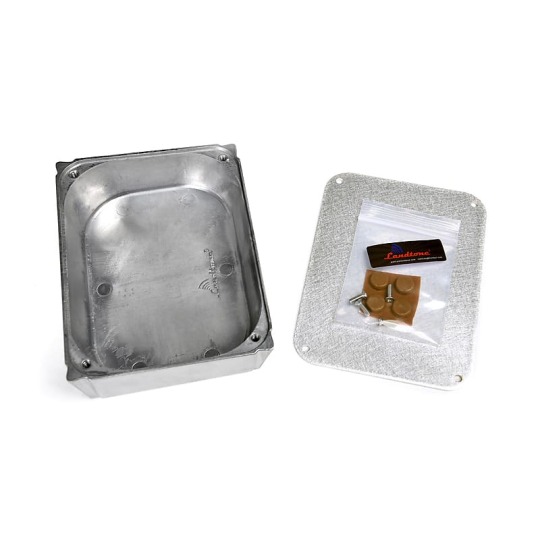
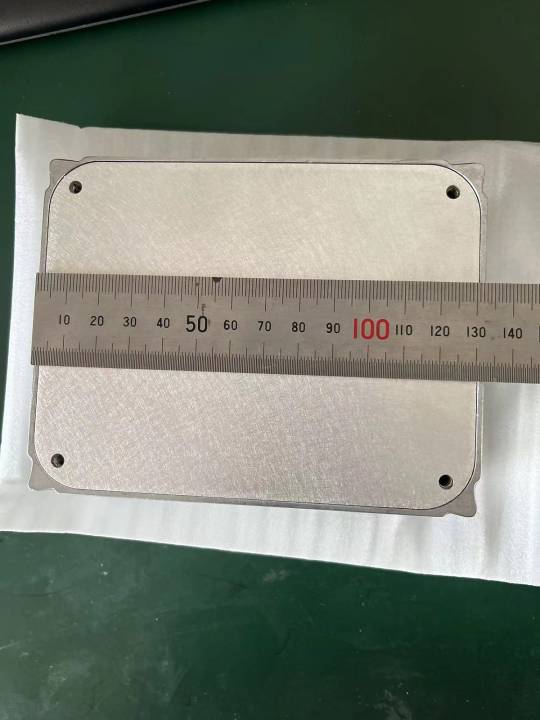
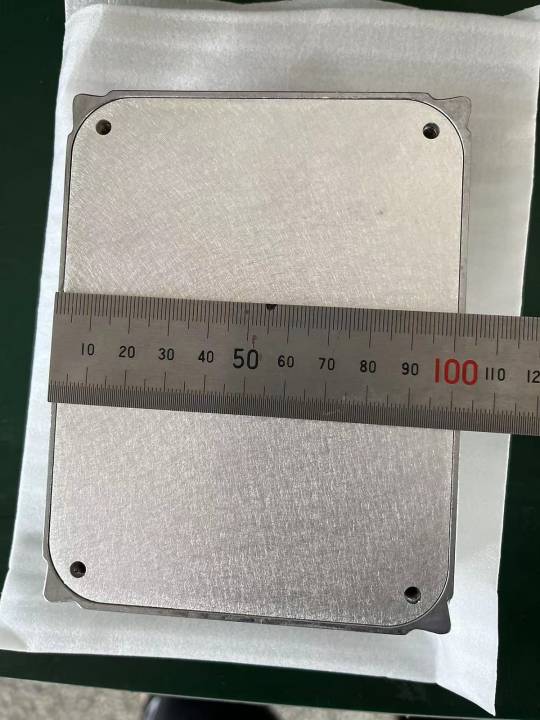
LANDTONE - mini klon-style enclosures
two different variations, one with a 4 screws bottom plate (the smaller one) and one with a 2 screws bottom plate (might be the Klon enclosure copy, featuring the same battery compartment)
cred: reverb.com/LANDTONE HANDMADE PEDAL STORE 4screws, 2screws
1 note
·
View note
Text
Cheap mini pedal clones

#Cheap mini pedal clones full#
#Cheap mini pedal clones pro#
While all the pedals covered here sound convincingly Klon-like, the Archer clearly aspires to the original's build quality, too. Rockett, stands out from the herd even before you plug it in. (A germanium Fuzz Face, for example, is likely to sound too thin and bright when placed after a buffered effect.) Again, the differences are extremely subtle, unless you're connecting a retro-style fuzz downstream from Soul Food. Soul Food has a secret trick: a small internal switch to select between true bypass mode (the default) and buffer bypass mode. But these differences are far from dramatic. The Soul Food is a little brighter at the very top end, and the Klon has a wee bit more weight under 100 Hz. Even here, the two tones are quite similar. For the clearest comparison of diode color, listen to the second halves of the clips in the Gain Control playlist, where the gain knobs are at maximum. The clipping diodes are only a factor at high-gain settings. Hear for yourself: As mentioned, most of the Klon's overdrive comes from the TL072 op amp. At heavy settings, I think I hear slightly more compression and gain from the Soul Food, but I'm not always certain. Still, as Image 2 above shows, the Soul Food's tone profile matches that of the original Klon almost exactly. The latter are silicon in lieu of the Klon's germanium. The Soul Food circuit board employs mostly small, surface-mount components, with the exception of several capacitors and the clipping diodes. (Soul Food is the only pedal in this roundup that comes with an AC adapter.) You can also use standard 9V power supplies. It lives in a standard B-sized enclosure large enough for a battery compartment. Priced at a modest $86, EHX's Soul Food is the second-least-expensive pedal among the five competitors. The low output setting is too quiet to overdrive the amp, isolating the distortion color produced by the pedal, as opposed to how that sound interacts with an overdriven amp. First, you hear the passage with a low output setting, with the knob around nine o'clock, and then at maximum. The final test compares the output controls.
#Cheap mini pedal clones full#
The third comparison displays the full range of the tone controls, first at minimum, then at maximum, and then back to the noon position. Next comes a gain test: You hear each pedal, first with the gain control at minimum (that is, in full clean-boost mode) and then at maximum. First, there's a 1:23-long passage with all pedal knobs set to noon. In the audio-only clips you'll hear four audio comparisons arranged into four playlists. For the video I used a "parts" S-style guitar with Lollar Firebird pickups and Fender-style Carr Skylark.
#Cheap mini pedal clones pro#
For the audio-only clips ( see the page at the end of this article) I used a Fender Telecaster Deluxe with Lollar Regal wide-range humbuckers, a clean-toned Carr Telstar amp, and a Royer R-121 ribbon mic, recorded into Logic Pro via a Universal Audio Apollo interface. Aside from switching klones, nothing in the signal chain changes. That way, you hear the identical performance through each pedal. To keep things as objective as possible, I recorded the demo clips straight into my DAW with no processing, and then re-amped them through each of the klones.

0 notes
Text
watched a pedal demo channel get a stewmac pedal kit and 1) they give up after soldering on one transistor lol 2) i looked up the extremely detailed directions for the pedal and it refers to the tl072 as a “klon centaur style op-amp” LMFAO
1 note
·
View note
Photo

So got a ton of questions about this pedal. It’s made by @pharmerfx It’s a double drive style pedal. The red side is a #klon that has switchable diodes. The blue side is a #maxon820 it has an interior switch so you can change the order of the drives. Video coming up in a few https://www.instagram.com/p/CL3OwnUsdFd/?igshid=2yml37xgo03g
0 notes
Video
Today’s tone recipie: sometimes I like to use the @jrockettaudio #Archer #Ikon in front of a @victoriaamplifier tweed Champ to tighten it up and kiss it with a DB or two of boost. I’m using two mics in this. A @shure SM57 and an @ribbonmics A840 along with the new @uaudio #Helios mic pre. I use #klon style pedals more as a boost and tone shaper then as a singular overdrive. This is paired with my ‘52 reissue tele with @florancepickups A lot of small but specific details that make up a sound. Using a heavy fender pick and 10 gauge strings for those that are super geeks. #knowyourtone #recording #recordingstudio #recordingguitars #recordingguitar #gearybusey #tonefordays #guitarist #guitartone #guitar #guitarnerd #guitaramp #guitarpedals #telecaster (at New York, New York)
#guitarnerd#telecaster#recordingstudio#recordingguitars#tonefordays#guitartone#gearybusey#ikon#guitaramp#guitarpedals#helios#recording#klon#knowyourtone#recordingguitar#guitarist#guitar#archer
1 note
·
View note
Text
Ed O’Brien’s New TheGigRig Studio Pedalboard
Yesterday, Dan from TheGigRig made an instagram post showing a new pedalboard build which he’d done for Ed. The board features a few of Ed’s core pedals, most notably his vintage Electro-Harmonix Deluxe Memory Man, in addition to a few new boutique pedals which fill the same roles as older units. The board would be considered a pretty small setup for Ed, were it not for the two TheGigRig Cinco Cinco’s at the top of the board, which give Ed four channels for external effects. These channels are controlled by the TheGigRig G2 Switching System, giving Ed the ability to integrate any of his huge collection of effects pedals into the switching setup.
Thank you to Antoine for submitting details about the new pedalboard!
Here’s the picture of the board:

Though the new pedalboard does feature several new pedals, none or totally unexpected and all fill standard roles on Ed’s board. The Digitech Whammy WH5, Deluxe Memory Man, and ThorpyFX Muffroom Cloud Fuzz are all pedals which Ed has used previously. Ed used a standard Sonic Research ST300 Turbo Tuner from 2016-2017, so it makes sense that he’d switch to the Mini version for a smaller setup. The addition of the Belle Epoch Deluxe isn’t too much of a surprise, as Catalinbread sent a unit to Ed back in July (instagram). And while the Kingsley Page and Origin Effects Cali76-CD are both quite new for Ed, both are favorites of Dan and used frequently in his videos.
TheGigRig G2 Signal Order:
Channel 1: Origin Effects Cali76-CD
Channel 2: GUEST
Channel 3: Kingsley Page V2
Channel 4: ThorpyFX Muffroom Cloud Fuzz
Channel 5: Digitech Whammy WH5
Channel 6: GUEST
Channel 7: Catalinbread Deluxe Belle Epoch
Channel 8: GUEST
Channel 9: GUEST
Channel 10: Electro-Harmonix Deluxe Memory Man
Tuner/ Aux Out: Sonic Research ST-300 Turbo Tuner Mini
The signal order is indicated on the TheGigRig G2, with the name of each pedal indicated underneath the button for its loop. The channels used for external “GUEST” effects are additionally labeled on the Cinco Cinco patchbays.

Though a somewhat pixelated, the labels on the G2 are clear enough to make out. The labels read, from right to left: COMP, GUEST, PAGE, MUFF, WHAM, GUEST, BELLE, GUEST, GUEST, MM.
Signal Order Analysis
Overall, Ed’s signal order is highly consistent with the other pedalboards which he’s used since 2006. Placing a compressor at the start of his chain (excluding his tuner) is something which Ed has done since circa-2006, when he added an MXR Dynacomp to his setup. As such, putting the Cali76-CD in Channel 1 is to be expected.
The Kingsley Page is a tube-based overdrive which offers fairly transparent amp-like gain. Like many tube amps, it excels when pushed by boost and overdrive pedals, which is why Ed placed it in Channel 3. The “GUEST” spot on Channel 2 allows him to audition a variety of other drive and boost pedals, experimenting with how each pedals combines with the Page. Ed’s Klon Centaur is the most likely candidate for this spot, given its fame as a lightly-colored dirty boost, but in the studio he will doubtless experiment with a platoon of overdrives.
Ed has placed his fuzz pedals after his overdrives since he started using fuzz consistently in 2011. Fuzz after drives is not as common as the reverse, but that is primarily because of impedance issues with vintage fuzz units. The boutique muff-style Muffroom Cloud has no issues with signal placement, and sounds great when pushed by overdrive pedals.
The most surprising feature of the new board is that the Digitech Whammy is patched before any delay or looper pedals. Ed usually places his Whammy in the midst of his delays and loopers, giving him the ability to pitch-shift these effects, and even loop these manipulations (as he does most notably on performances of Everything In Its Right Place). That said, Ed still has the ability to patch pedals before Whammy (and after his drive pedals) by using the G2′s movable “volume pedal” insert. For his 2016-2017 touring setup, he used the volume insert to place a full second pedalboard – including a looper and several modulation pedals – in the control of his primary G2. The placement Whammy on the new board suggests that Ed probably does not intend to use it to pitch-shift his delays or loops, but the volume insert will give him that ability if he ever desires it.
Ed has always liked to keep his vintage Deluxe Memory Man fairly late in his signal chain. It lets him to add the DMM’s distinctive space and modulated warmth to both his playing and to his loops. Placing a delay after a looper also allows Ed to seemingly change the sound of the loop by adjusting the delay: something which he does frequently on performances of Everything In Its Right Place and Ful Stop. None of the pedals on the new studio board itself can function as loopers, but the “GUEST” inputs offer several locations where a looper (most likely a Line 6 DL4 or TC Electronic Ditto X4) could be patched in front of the DMM.
Since Ed likes to patch his DMM fairly late in his chain, it makes sense that the Deluxe Belle Epoch is patched a few loops back. Its placement in Channel 7, with two "GUEST” loops directly in front and one behind, suggests that Ed intends to loop and modify its sounds.

This photo of Ed’s Voodoo Lab switching units for touring in 2011-2012 makes his signal order clear. The Voodoo Lab units are patched from left-to-right, with “MUTE” first in chain and “WAH” second-to-last. “FUZZ” refers to Ed’s Lovetone Big Cheese, ”CENT” refers to his Klon Centaur, and “COMP” refers to his Diamond Compressor.
Differences from Ed’s Previous “Studio” Pedalboard
Ed’s new pedalboard is the second “studio” board which Dan has build for Ed. The first studio board was built in November 2014, and was very likely used to record A Moon Shaped Pool. Like the new pedalboard, it is paired down, containing many of Ed’s core pedals (or types of pedals). But while the 2014 board was designed primarily to be a self-contained system, the new pedalboard is meant to be integrated with a variety of external effects.
Another key difference between this pedalboard and Ed’s previous “studio” board, is that it gives immediate access to all pedals on the board. This is likely so that Ed can easily change settings on his new overdrive and compressor pedals. The 2014 pedalboard placed Ed’s drive and compressor effects underneath a raised TheGigRig G2. This gave room for more pedals on the board, but also made them harder to get to – indicating that Ed didn’t plan to change their settings very often. This made sense, since he had been using those pedals or similar ones for a while (for example: the Rockett Pedals Archer is undoubtedly set to match Ed’s settings for the Klon Centaur which he’d used since 2011). Ed’s touring board for the 2016 and 2017 tour similarly kept drive and compressor effects beneath a raised TheGigRig G2, and Ed rarely (possibly never) changed their settings during a performance.
Here’s a picture of the 2014 “studio” board:

Last edited: 2017.09.23
53 notes
·
View notes
Text
Wampler Germanium Tumnus - Limited Run Germanium Klon
The Wampler Tumnus Germanium Overdrive has just been announced as a limited-run version of the popular Klon-style overdrive. Tumnus Germanium The Wampler Tumnus Germanium Overdrive pedal features three intuitive controls – Gain, Level, and Treble – mirroring its predecessors. But the true magic lies within a specially acquired set of vintage germanium diodes, carefully selected by Brian Wampler…
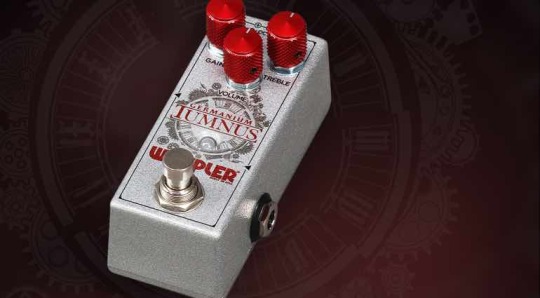
View On WordPress
#Bill Finnegan#Brian Wampler#diodes#germanium#germanium diode#Germanium Tumnus#Instagram#Klon Centaur Overdrive#limited edition#Limited Run#overdrive#pedal#stompbox#Wampler#Wampler Germanium Tumnus
0 notes
Photo

The #underfluked and @jsa_effect_pedals #LittleTrebleMaker #treble #boost. Giving #klon style boost and treble boost without losing the bottom end. Works great in front of or after drive pedals. Available now from the link in our bio or via DM. #guitarpedal #pedalboardfrenzy #guitareffects #guitarpedals #guitarpedalshoppe #pedalboardoftheday #guitarpedalboard #pedalboards #guitarpedalsdaily #guitareffectspedal #pedalboard #guitareffectspedals #gearybusey #geartalk #stompbox #stompboxes #boutique #pedalmaker #madeinengland #pedal #pedals #gear #gearnerd #pedalnerd #becausetone — view on Instagram https://ift.tt/38kV7Jr
0 notes
Audio
Ep. 79 - What Happens In This Podcast Will Shock You. At 34:20 I Cried
Fender American Professional Series (Stab: TC Viscous Vibe)
Sits just below the new American Elite line (more like the now end-of-life’d original American Standards)
New “Deep C” neck shape. Thinner towards headstock, thicker towards body. Combination between a C and a U.
Bone Nut(!) 22 Narrow-Tall 6105 Frets
Treble bleed circuit
Stratocaster
Standard
Lefty
HSS w/ Shawbucker
HH w/ 2 Shawbuckers
Pop-in trem arm on all models
Telecaster
Standard
Lefty
Deluxe (HH)
New bridge design, more like the vintage ashtray style but a bit shorter walls
3 compensated brass saddles (finally)
Jazzmaster & Jaguar both feature the more user friendly Mustang bridge
Jazzmaster has simplified controls: 3-way toggle, volume & tone
P-Bass, lefty P-Bass, P-Bass 5 string
Jazz Bass, Lefty, 5 string, fretless.
http://shop.fender.com/en-US/electric-series/american-professional/
Pedal Genie
http://www.mojohandfx.com/product/colossus-fuzz/
Derek year in review
Catalinbread CSIDMAN ep 58
Roli Seaboard RISE ep 60
Klon clean boost ep 67
Fender Flea Jazz bass ep 68
Fuzzrocious greyfly ep 69
Favorite PG pedal: OBNE Procession
J’s year in review
This year went so fast.
Neunaber pedals (from last year, Immerse reverb this year.
A solid year for pedal development.
The bogner / Neve pedals in general.
Lots of reverbs and stuff this year, I think the Catalinbread Adineko and DBA ghost Delay. Solid Gold FX electroman.
Has fender come out with tons of new guitars this past year?
Major advancements in tuner pedal technology!
Obviously the MODO bass instrument from IK multimedia
Worst of the year goes to Gibson for their “2017” lineup where the traditional model doesn’t have traditional features.
But…
Gibson gets a clean slate for 2017!
#The Tone Control#Podcast#Music#Episodes#Guitar#Pedal Genie#Stratocaster#Telecaster#Jazzmaster#Jaguar#Jazz Bass#P-Bass#MJT#Recording#Guitar Podcast
1 note
·
View note
Text
The Ibanez TS808/TS9 Tube Screamer

youtube
I’ve mentioned this dynamic a bunch of times before, but it bears repeating...the Fender Stratocaster needs help.
If you took Stevie Ray’s core, foundational rig...strip away all of the stuff like chorus and vibrato and reverb, all that shit...you’d have “Number 1″ (a ‘63 Strat body with a ‘62 Strat neck and ‘59 pickups), an Ibanez TS808 and a blackface Fender Super Reverb.
There’s an inherent “problem” with blackface Fender amps...even the ones with mid controls are scooped, i.e. lotta bass, lotta highs, not a lot in the middle. This is great for glassy or snappy rhythm playing, but pretty shitty if you want a fat sound from single coil pickups or really want a solo to power through the mix. And the reason the inherently scooped Strat is so versatile, is because they’re polite and don’t stand out. But when you need a Strat to stand out? Enter the help.
The TS808 and TS9 are basically the same thing...a mid-boost that’s designed to push an amp on the edge of breaking up, into full overdrive. It colors an amp’s tone a little bit, adds a small bit of FET-driven overdrive, but really the whole point of the Tube Screamer is to completely fill in those missing mids on scooped amps.
Stevie didn’t have this problem when he started hauling Marshalls around...even less so when he started playing Dumbles and old tweed Bassmans (Fender’s mid-heavy tweeds and glassy blackface amps are very, very different amps despite being made by the same people, at the same company, a mere decade or so apart)...but he still used the Tube Screamers in there, even as he ditched things like fuzzes for the over the top stuff.
A lot of people buy Tube Screamers, go home alone, play them on an amp that’s not even at 2 on the dial and go “this sounds like shit.” Well yea. NO SHIT. It’s called Tube Screamer, but it’s kind of a misnomer because the tubes have to be really close to screaming already. If you play this outside of a band, you’ll wonder what all the fuss is about...but play it as intended, LOUD and in a band mix, immediately you’ll see why this simple FET-based mid-boost pedal has been a staple on guitar pedalboards for four decades now.
Make no mistake, this isn’t some spendy boutique piece of gear...the vintage ones are pricey due to supply and demand, but they’re no better/worse than the ones you can get for like $100 used anywhere in the country. It’s just a mid-boost...hundreds of companies make these. Same with the Klon...an original Klon goes for $3k now, but it’s just a treble-boost, and you can get one for like $100 from a bunch of different places...it’s just that there are only a few hundred original Klon’s left, that’s all.
Boosts are incredibly useful, in general*, but you gotta use them correctly. And if you’re using any combination of Fender guitars and amps, the Ibanez Tube Screamer is pretty much the most ideal boost you could ever want.
*A bass-boost is not useful for guitarists...EQ is everything, and guitarists do not want to clash with the low and low-mid registers...i.e. the domain of the kick drum, toms, bass and the keyboard’s left hand. For amp and pedals, the bass EQ for my Strat is about 4/10, 3/10 for my Gibson 335.
Volume is determined by a wave’s amplitude, its pitch by frequency...think of that Perfect Storm movie, where the ship is going up and down these massive waves...that’s what you’re doing to people’s ears with a lot of bass in the EQ at loud volumes. And this why tweed amps (this includes Marshalls, which are essentially the Bassman), Vox’s and Dumble-style amps still kick ass to this day...MIDS MIDS MIDS MIDS, HIGHS HIGHS HIGHS HIGHS.
PS...I don’t have a Tube Screamer anymore, even though I did have a TS9 back in the day when I was playing my Strat through a Fender Deluxe Reverb. My amp (Dr. Z Carmen Ghia) is mid-heavy and starts to break up around 10:00 on the volume knob...I currently use a Paul Cochrane Timmy (treble-boost) for my first gain and a Benson Preamp for my second gain stacked on top**. If your amp has a lot of mids already, you don’t want to boost it, rather cut the bass away with each subsequent stage.
**Gain stacking is using multiple boost pedals at once. First pedal boosts the signal to the amp, the second pedal then boosts the signal the first pedal is sending for even more gain. This allows you to add gain without mud...both gain/drive settings aren’t past noon, but when they’re both engaged, the tone is similar to Van Halen’s classic brown sound.
0 notes